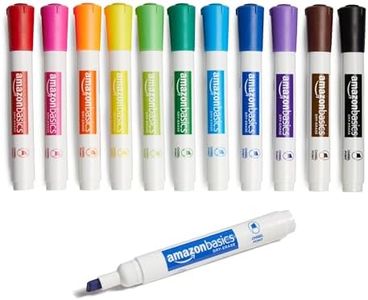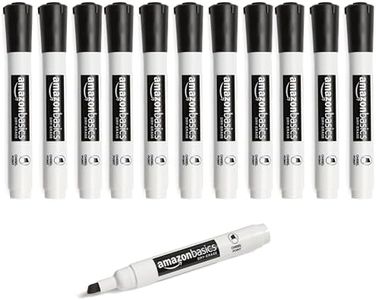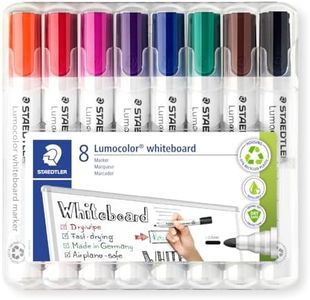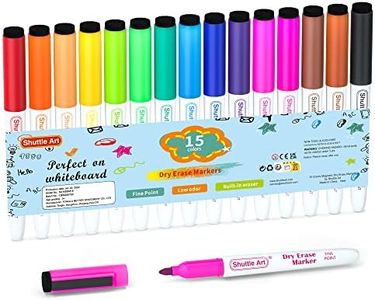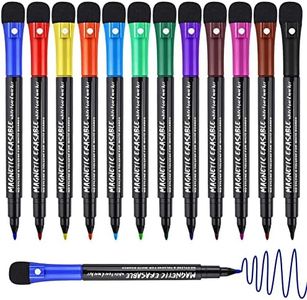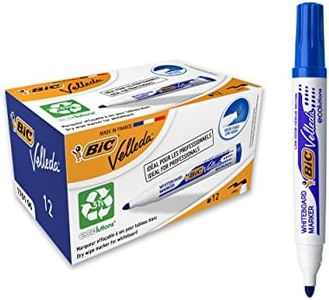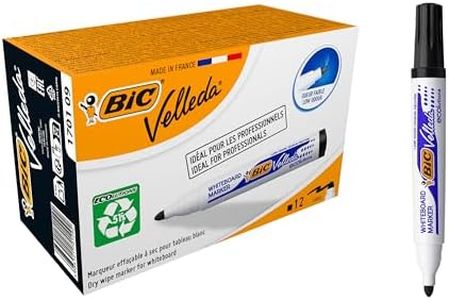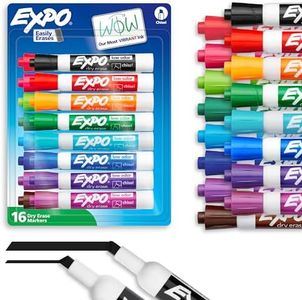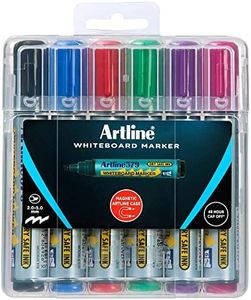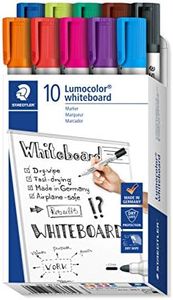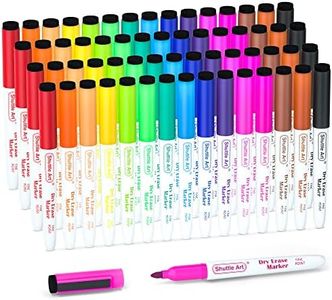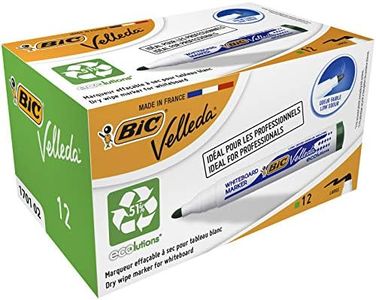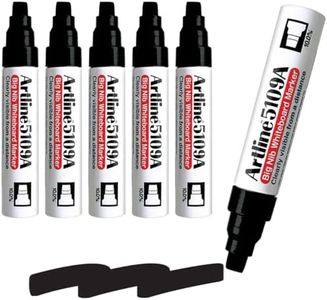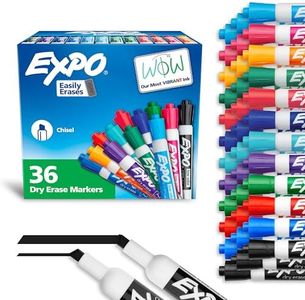We Use CookiesWe use cookies to enhance the security, performance,
functionality and for analytical and promotional activities. By continuing to browse this site you
are agreeing to our privacy policy
10 Best Dry Erase Markers
From leading brands and best sellers available on the web.Buying Guide for the Best Dry Erase Markers
Choosing the right dry-erase markers may seem simple, but picking the best fit depends on how and where you'll use them. Consider whether you're using them at home, school, or work, and think about how often you write, what surfaces you'll use, and if you have special needs like low odor or specific color requirements. By understanding the key features, you can find markers that write smoothly, last longer, and suit your personal style and setting.Tip TypeThe tip type refers to the shape and size of the marker's nib, which greatly affects your writing or drawing. The most common are chisel, bullet, and fine tips. Chisel tips are versatile because you can get both thick and thin lines, making them good for both writing and drawing. Bullet tips offer consistent medium-width lines and are popular for general writing and classroom use. Fine tips are best if you need to write small or add detailed markings. Choose the tip style based on whether you need bold, visible text or finer, controlled writing, and think about the size of the writing surface you'll use most often.
Ink Type (Low Odor vs. Regular)Dry-erase marker ink can have strong chemical smells, especially older or standard versions. Low-odor markers are formulated to minimize unpleasant smells, making them better for spots with poor ventilation, people who are sensitive to odors, or environments like schools and offices. If marker smell bothers you or you'll use them in a closed room or around children, go for low-odor ink. If scent is not a concern or you're mostly using them for brief periods, regular ink might be suitable.
Color VarietyMarkers come in a range of colors from basic black and blue to full multi-color packs. More colors allow for color-coding, visual emphasis, or creative presentation, which is useful in teaching, planning, and brainstorming. Fewer colors (like just black or blue) may be enough if you're only writing text or using them for simple lists. Choose a set based on whether you want creativity or just basic function—students and teachers might benefit from more variety, while simple note-takers may need only the basics.
Ink LongevityThis refers to how long the ink lasts before the marker dries out, both in terms of write distance and shelf life. Some markers are designed for frequent, heavy use and hold more ink, while others are better for occasional notes. If you use markers daily or in a group setting, choose those labeled for long-lasting performance. For infrequent use, shelf-life matters more—pick markers that won’t dry out quickly even if they're left uncapped for short periods.
ErasabilityErasability means how easily the marks can be wiped off the board surface. Some markers may leave residue or stains, especially on older or lower-quality whiteboards. Look for markers described as easy to erase or residue-free if you want clean surfaces with little effort. If you’re only making temporary marks or are okay with occasional cleaning, this might be less of a priority, but it's important if you regularly refresh the board or want a spotless appearance.
Surface CompatibilityDry-erase markers typically work best on non-porous surfaces like whiteboards and glass, but some may be better tailored for certain surfaces. If you write on specialized or alternative materials, make sure the markers are listed as compatible. For standard whiteboards, most dry-erase markers work, but check packaging if you plan to use them on things like glass boards, laminated calendars, or non-traditional surfaces to ensure easy erasing and no staining.
